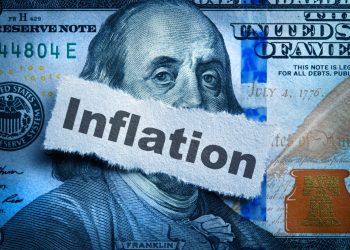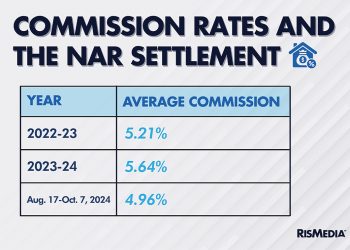Despite ongoing affordability challenges and economic volatility, single-family home price tags continued to rise in March—albeit modestly—as limited for-sale inventory helped add some upward pressure.
According to the latest S&P Case-Shiller Index, home prices increased 0.7% annually, down from 2.1% in the previous month. This marks the second month of increases in a row. Still, experts suggest it could also signal further hesitation among home sellers to list their homes given the current mortgage rate circumstances.
The national index posted a 1.3% increase from the month before, while the 10-City and 20-City Composites posted gains of 1.6% and 1.5%, respectively.
Annually, the 10- and 20-City indexes marked declines of 0.8% and 1.1%, respectively. According to the report, 10 of the 20 metros analyzed reported lower prices in March compared to the same period last year.
Miami, Tampa and Charlotte reported the highest annual gains among the 20 cities in March, climbing 7.7%, 4.8% and 4.7%, respectively.
The complete data for the 20 markets measured by S&P:
Atlanta, Georgia
March/February: 1.1%
Year-Over-Year: 4.5%
Boston, Massachusetts
March/February: 1.3%
Year-Over-Year: 0.8%
Charlotte, North Carolina
March/February: 1.7%
Year-Over-Year: 4.7%
Chicago, Illinois
March/February: 1.9%
Year-Over-Year: 4%
Cleveland, Ohio
March/February: 0.6%
Year-Over-Year: 2%
Dallas, Texas
March/February: 1.1%
Year-Over-Year: -1.2%
Denver, Colorado
March/February: 2%
Year-Over-Year: -3.6%
Detroit, Michigan
March/February: 2.2%
Year-Over-Year: 1.2%
Las Vegas, Nevada
March/February: 0.5%
Year-Over-Year: -5.1%
Los Angeles, California
March/February: 1.7%
Year-Over-Year: -2.9%
Miami, Florida
March/February: 0.7%
Year-Over-Year: 7.7%
Minneapolis, Minnesota
March/February: 2%
Year-Over-Year: 0.5%
New York, New York
March/February: 1.3%
Year-Over-Year: 3.3%
Phoenix, Arizona
March/February: 0.5%
Year-Over-Year: -4.5%
Portland, Oregon
March/February: 1.4%
Year-Over-Year: -4.6%
San Diego, California
March/February: 2.5%
Year-Over-Year: -5.3%
San Francisco, California
March/February: 3%
Year-Over-Year: -11.2%
Seattle, Washington
March/February: 2%
Year-Over-Year: -12.4%
Tampa, Florida
March/February: 1%
Year-Over-Year: 4.8%
Washington, D.C.
March/February: 1.5%
Year-Over-Year: -0.2%
The takeaway:
“The modest increases in home prices we saw a month ago accelerated in March 2023,” says Craig J. Lazzara, managing director at S&P DJI. “Two months of increasing prices do not a definitive recovery make, but March’s results suggest that the decline in home prices that began in June 2022 may have come to an end. That said, the challenges posed by current mortgage rates and the continuing possibility of economic weakness are likely to remain a headwind for housing prices for at least the next several months.”
“Today’s S&P CoreLogic Case-Shiller Index showed a slight acceleration in national home prices relative to last year though this spring lacks its typical energy due to ongoing inventory and affordability challenges,” said Hannah Jones, economic data analyst at realtor.com®. “The first quarter of 2023 brought stabilizing mortgage rates, which reached a low of 6.09% in early February and a high of 6.73% in early March. “Rates remained within this band for the entirety of the first quarter, enabling buyers to plan for their home purchase without having to adjust for significant mortgage rate volatility. However, even as buyers adjusted to the new normal of mortgage rates, home sellers continue to feel ‘locked-in,’ hesitant to take on a new mortgage at today’s rates. As a result, many owners are choosing not to list their homes for sale, creating a challenging buying environment and heightened competition in many areas.
“The future of the housing market hinges on the outcome of current economic uncertainty, as mixed signals obscure the future of the economy. Investors are keeping a close eye on debt-ceiling negotiations as well as the potential outcome of the upcoming FOMC meeting, both of which have the potential to push interest rates higher. Meanwhile, though still above the target level, inflation is slowing and the unemployment rate is at its lowest level since the summer of 1969. Easing inflation, a strong job market and cooling home price growth offer some optimism to home shoppers who have been plagued with high costs over the last few years.
“The housing market is somewhat gridlocked as still-high housing costs and low inventory levels mean buyers face budget challenges as well as competition for the limited fresh listings on the market, leading to upward pressure on prices. As a result, pending home sales leveled off in April, demonstrating both constrained buyer demand and limited available home supply. However, recently stabilized mortgage rates and slowed listing price growth has granted some welcomed breathing room. Additionally, buyers have increasingly turned toward new construction to find what they are looking for when confronted with dwindling existing home supply. The housing market is likely to remain relatively tense until either home prices or mortgage rates fall enough to bring balance via both buyer and seller activity.
“Though the national housing market is far from balanced, many local markets have seen softened prices and climbing inventory, a sign that balance is on the way locally. On the other hand, many low-priced markets, such as those featured in April’s Hottest Markets, continue to see relatively high demand and price growth as buyers flock to areas that are still in the realm of possibility for homeownership,” Jones concluded.












